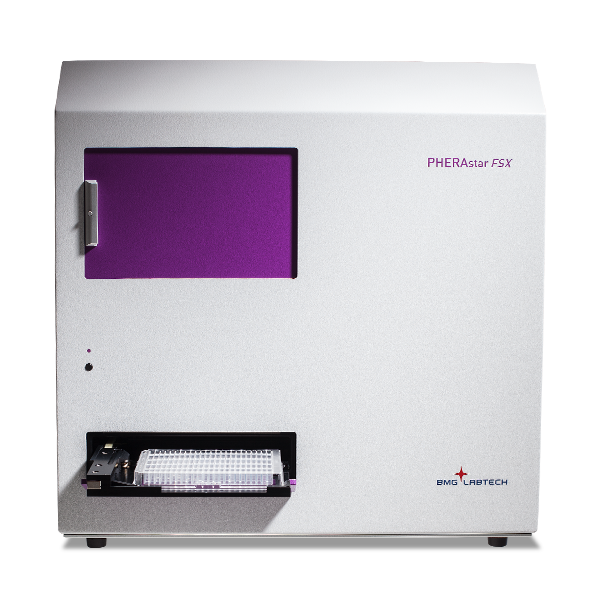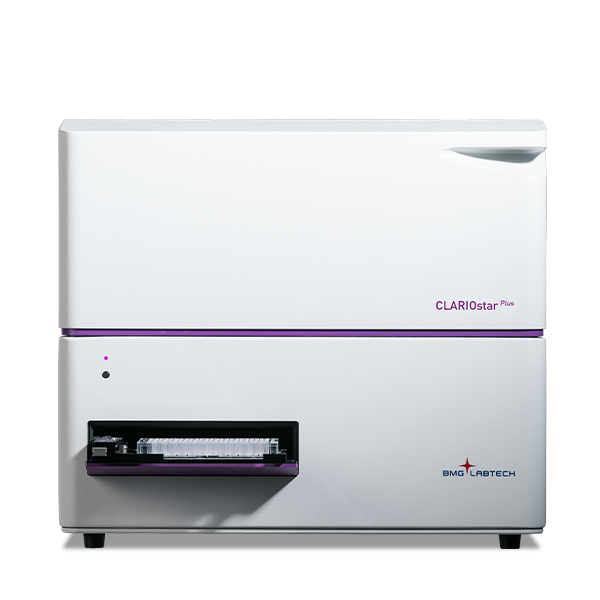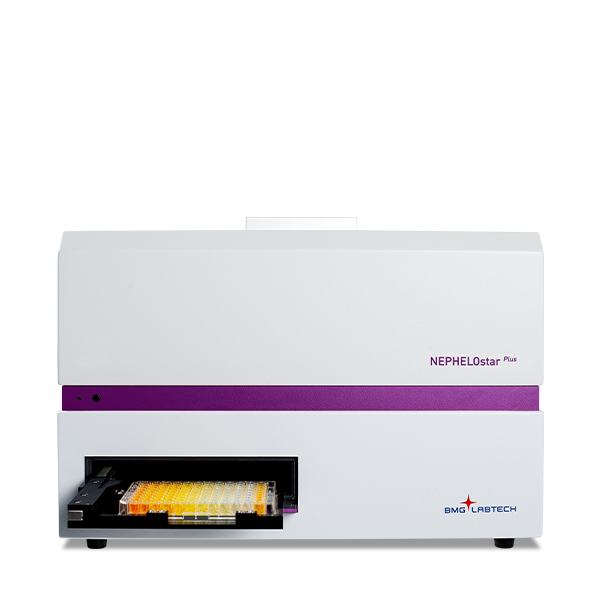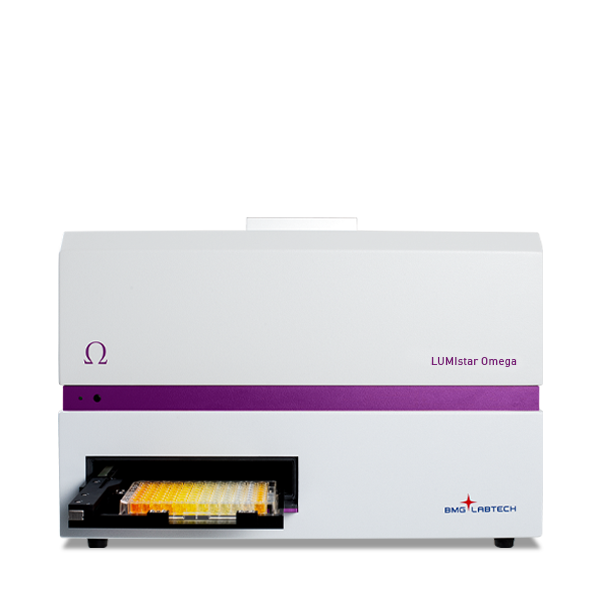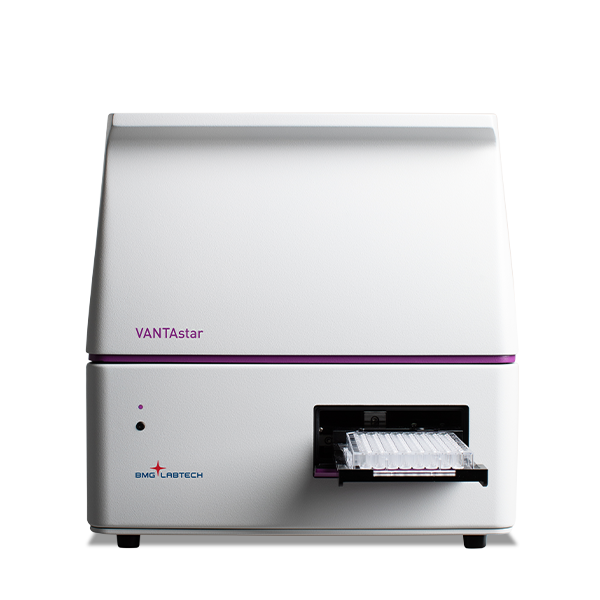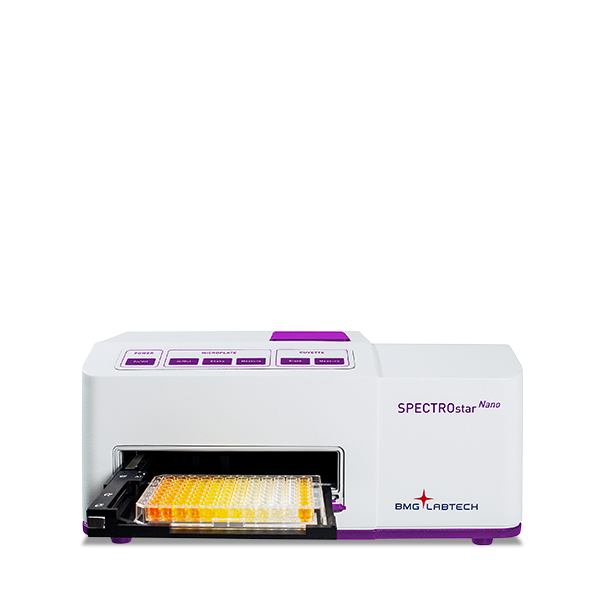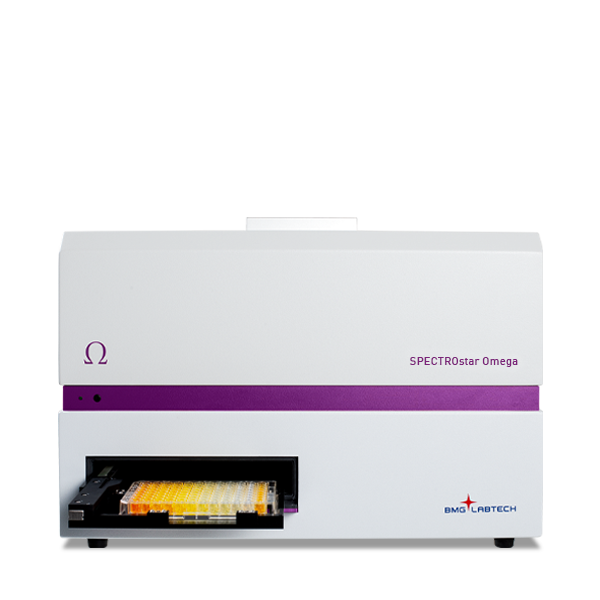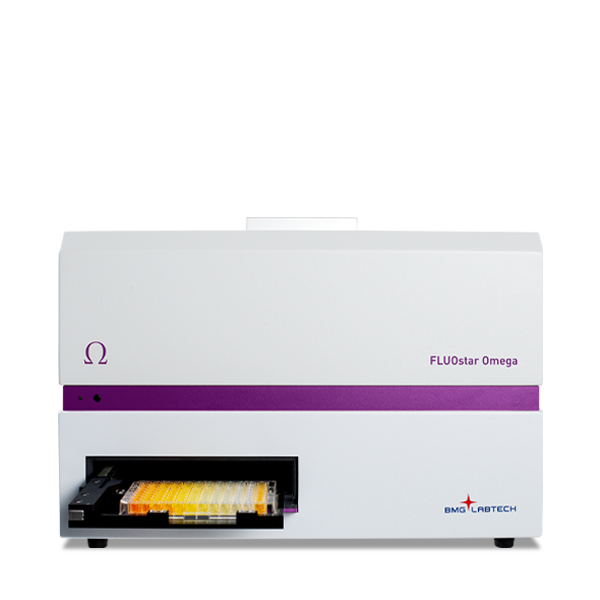
 Basic information about multi-mode microplate readers
Basic information about multi-mode microplate readers
A multi-mode microplate reader (short form: multi-mode plate reader or multi-mode reader) is a piece of lab equipment capable of detecting with different technologies the light photons emitted by samples of different nature and quantifying them.
Multi-mode microplate readers are capable of operating in two or more detection modes. Typically, they combine an absorbance plate reader, a luminescence plate reader, and a fluorescence plate reader in one instrument. In addition, the range can be enhanced with more advanced detection modes like time-resolved fluorescence (TRF), time-resolved FRET (TR-FRET), fluorescence polarization (FP), and AlphaScreen/AlphaLISA.
Compared to single-mode instruments, a multi-mode microplate reader offers the advantage of a wider range of detection technologies at a fraction of the cost of multiple dedicated instruments. Besides being cost effective, a multi-mode microplate reader saves bench space in the lab and can increase throughput and efficiency, especially when assay and application multiplexing is needed.
Nowadays, the availability of a plethora of technologies and reagent kits enables the exploitation of a multi-mode microplate reader in different fields from life science research to drug discovery, and for many different applications. Besides biological, cellular, biochemical, and pharmaceutical research and drug discovery, both in academic and industrial environments, a multimode microplate reader is also used in environmental research, and in the food or cosmetics industry.
- Initial recommendation
- Detailed Recommendation

Get help selecting the right microplate reader
Configure your microplate reader and get an initial recommendation!
What is a multi-mode microplate reader?
Multi-mode microplate readers are used in different research fields for the quantification of different biological and chemical assays in a microplate. These assays span over a wide wavelength range, generally from 220-900 nm in different detection modes (typically fluorescence intensity, luminescence and UV/vis absorbance measurements). They are very complex instruments, optically speaking. Using different technologies, their optical system has to efficiently cover a broad range of detection modes in which luminous signals are generated in different ways.
Multimode microplate readers usually contain one or multiple light sources, an optical system for the selection of excitation light (i.e., filters, monochromator, UV-vis spectrometer), a second optical system for the selection of emission light, and a detector, usually one or multiple photomultiplier tubes (PMT). PMTs convert photons generated by luminescent or fluorescent probes into electricity that is then quantified by the multi-mode microplate reader. The output of this process is numbers by which a sample is quantified.
Do you want to use a multi-mode microplate reader in your lab?
Request a quote or more information here:
Multi-mode microplate readers bear several advantages for research labs running multiple applications. Their optical system combines different microplate reading technologies (most commonly absorbance, fluorescence intensity, and luminescence) into a single, more versatile platform, they are a great choice, especially if you have limited bench space, and offer you the most value for money. Nevertheless, there are a few factors to take into account, as the performance of the multimode microplate reader can significantly affect the quality of your results.
Sensitivity
Multi-mode microplate readers with the best sensitivity allow you to read very low signal intensities and to have a better resolution of signals within your assay window. This is most important if your negative and positive control are close together. In order to still identify changes between positive and negative control, a highly sensitive instrument is needed.
Speed
A multimode microplate reader capable of high detection speed is recommended when working in high-throughput screening, measuring hundreds of high-density plates (384, 1536, and 3456 well plate formats) a day. However, a high temporal resolution may be needed as well to resolve quick kinetic events like protein-protein interaction, drug binding, or cell signalling. In addition, speed is also beneficial if you need to increase the number of data points in a fixed amount of time (e.g. quantitatively measure Ca2+-transients in heart tissue).
Flexibility
A multi-mode plate reader that provides numerous options is recommended if your research work is based on different technologies and requires running multiple applications in parallel, or if your needs change over time. The possibility to switch and combine detection technologies, to easily switch between top and bottom reading, or to change wavelengths in absorbance, fluorescence and luminescence-based detection is usually recommended.
Wavelength selection
Generally, a wavelength range selection capability in multimode microplate readers is mandatory. It helps to reduce unspecific background or noise that is usually caused by light scatter or autofluorescence from both the plate. Filters or monochromators can be employed for this purpose, they typically have a wavelength range from 220-900 nm.
Monochromator vs. filters
Filters are usually more sensitive but work just for a specific wavelength range, whereas monochromators offer more flexibility with a broader wavelength range. An exception to this paradigm is the Linear Variable Filter (LVF) MonochromatorTM system available on the CLARIOstar Plus and the VANTAstar. LVF Monochromators have filter-like performance and make the CLARIOstar Plus the most sensitive monochromator-based multimode microplate reader on the market. LVF Monochromators can be used in fluorescence intensity and luminescence detection. In addition, monochromators have spectral scanning capabilities and can acquire both excitation or emission spectra.
Kinetic and Endpoint Measurements
Assays in the life sciences include endpoint and kinetic measurements. Endpoint tests provide a snapshot of the reaction at a single time point and are ideal for applications where a final, stable reaction product is measured. Commonly used endpoint assays include protein quantification and nucleic acid detection. Kinetic analyses track the progress of a reaction over time, offering insights into the dynamics of the process. This is particularly useful in enzyme kinetics, drug binding, and cell-based assays where reaction rates and changes over time are of interest. High-end multimode microplate readers can efficiently perform both types of measurements, allowing researchers to choose the best approach for their specific applications.
Dual emission detection modes
Additionally, the capability of detecting two emission channels simultaneously on a multimode microplate reader is quite beneficial for studying protein-protein interactions by fluorescence intensity (FRET and TR-FRET), luminescence (BRET) or fluorescence polarization and Alpha Technology assays. This option halves measurement time and reduces data variability. Simultaneous Dual Emission (SDE) detection is available on the PHERAstar FSX and is an option on the LUMIstar Omega (single-mode luminometer) and FLUOstar Omega.
Compatible plate formats
Commonly, basic assays are measured in 96-well plates. However, if you have multiple samples and/or wish to save precious reagents or time, 384-well and 1536-well plate formats can also be used and require less µL fill volume. Just make sure that your multi-mode microplate reader of choice is also capable of reading the plate format you plan on using. Moreover, absorbance, fluorescence intensity, and luminescence detection require different microplate types.
Reagent injectors
When looking for a multimode microplate reader, you should consider the nature of your research and the assay and application you want to run. For enzymatic kinetics or real-time cell-based responses (bioassays) in absorbance, fluorescence and luminescence mode, the use of reagent injectors can be beneficial. By manually pipetting reagents into the wells you can run the risk of losing important data about your reaction. Especially for fast responses, the event you are looking for may already be gone before you detect it. Our multi-mode microplate readers equipped with reagent injectors can inject and detect the signal of a well, and then move to the next one (e.g. monitoring intracellular calcium using fluorescent dyes).
Environmental control
If you want to run long-time live cell-based assays and do not want to shuffle your plate back and forth between a multi-mode microplate reader and incubator, make sure that your plate reader of choice has the capability to control its internal gas environment.
Besides temperature control, the Omega series, the VANTAstar, and the CLARIOstar Plus can be equipped with our Atmospheric Control Unit (ACU). The ACU provides the ideal environment for any live cell-based application. The ACU independently regulates both O2 and CO2 gas levels within the microplate reader chamber. Combined with shaking and temperature incubation, the ACU provides a real “walk-away” solution for any cell-based assay from standard cell growth to hypoxic applications.
Automation friendliness
Automation is pivotal for enhancing efficiency and accuracy in laboratory settings. By integrating automated systems, researchers can significantly reduce manual intervention, thereby minimizing human error and increasing throughput. Walkaway automation is particularly beneficial in high-throughput screening applications, where large numbers of samples need to be processed swiftly and accurately. An automated multimode microplate reader streamlines workflows by handling repetitive tasks, thus freeing up valuable time for scientists to focus on more complex analytical tasks. Furthermore, automation supports consistent and reliable results. By automating a multimode microplate reader, laboratories can achieve faster turnaround times, improve data quality, and optimise resource allocation, ultimately leading to more cost-effective research operations. BMG LABTECH plate readers offer excellent robotic integration capabilities, multi-user control, digital signature and FDA 21 CFR part 11 compliance. Their robotic software interface make it easy to integrate into all leading robotic platforms.
Modularity/Upgradability
Consider a multi-mode microplate reader that is modular and has the option to be upgraded at later time points. Upgradeable multi-mode microplate readers not only meet your current necessities but could fulfil your future assay requirements as well, evolving with your future lab needs and supporting new projects and application changes.
Moreover, modular multi-mode microplate readers save you money as they allow laboratories to purchase only what they need at the time. If additional features or detection modes are required in the future, the multimode microplate reader can be upgraded at any time.
 Our multi-mode microplate readers
Our multi-mode microplate readers
BMG LABTECH offers different types of multi-mode microplate readers, from the budget-friendly filter-based Omega series with absorbance, fluorescence and luminescence to the flexible LVF Monochromator-based™ CLARIOstar®Plus and VANTAstar®, up to the high-end, high-throughput screening dedicated PHERAstar®FSX. Our microplate readers are also compatible with different plate formats from 96 well up to 3456 well plates.
All our multi-mode microplate readers are equipped with a high-intensity xenon flash lamp, assay-specific filters, optic modules, or LVF Monochromators™ (reader-dependent), and low-noise or extended red-shifted PMTs.

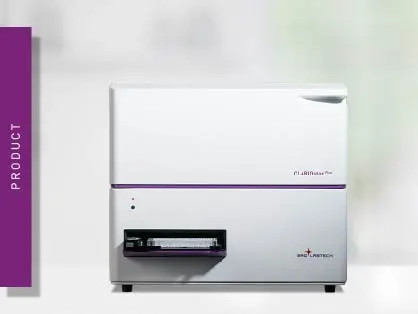
CLARIOstar Plus
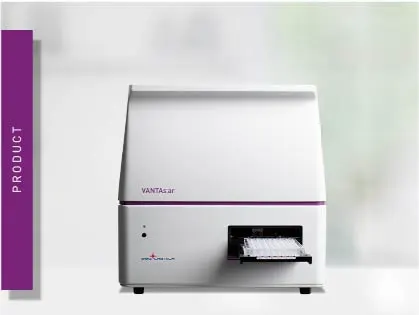
VANTAstar
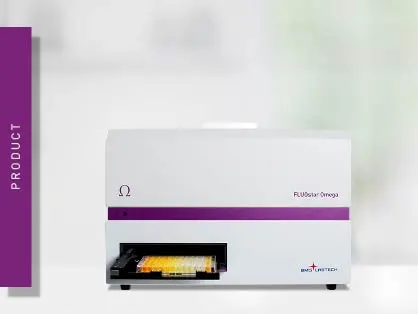
Omega series
Which assays can be measured by a multi-mode microplate reader?
Multi-mode plate readers offer higher flexibility of detection, enabling the measurement of multiple assays and applications in absorbance, fluorescence and luminescence in different research fields. In the life sciences applications include bacterial growth, nucleic acid and protein detection and quantification (with absorbance or fluorescence), gene reporter assays, HTRF (Homogeneous Time-Resolved Fluorescence), BRET, etc.
Luminescence and fluorescence intensity are used to analyse cell-based assays such as cell viability, cytotoxicity and apoptosis assays, signalling pathways and metabolism.
The so called advanced detection modes include time-resolved fluorescence (TRF), TR-FRET, fluorescence polarization, and AlphaScreen. These are mainly used in drug screening for analyte identification, binding studies and drug screening in high througput.
Multimode microplate readers are recommended whenever an instrument is shared by many users when the application you run changes from project to project or if you need to read assays with different detection modes and/or multiplex.
A fully equipped multimode microplate reader with absorbance, fluorescence intensity, luminescence, time-resolved fluorescence (TRF), TR-FRET, fluorescence polarization, and AlphaScreen can detect all non-radioactive assays available on the market. The following are examples of measurements taken with BMG LABTECH multimode microplate readers.
Examples of measurements with BMG LABTECH multi-mode microplate readers:
The following are examples of measurements taken with BMG LABTECH multi-mode microplate readers. Each application note describes a different use of a multimode microplate reader:
-
AN 362: DNA purity ratio – fast and easy absorbance-based evaluation of nucleic acid quality
-
AN 367: Transfection efficiency determined with fluorescence based bottom reading for GFP and mcherry
-
AN372: Real-time cell motility tracking increases the throughput of scratch wound assays
See a complete list of all application notes with our multi-mode microplate readers.

![]()
Why to choose a BMG LABTECH multi-mode microplate reader?
BMG LABTECH is specialised in producing multimode microplate readers only and brings more than 30 years of full expertise in plate reading technology. This knowledge gets visible in the results that our instruments deliver - the only factor that counts in your lab! BMG LABTECH users can trust to obtain best results in sensitivity, speed and flexibility. Moreover, our multimode microplate readers are developed to provide optimum performance for years. Our instruments are developed, produced and tested in Germany and are built to be extremely robust and reliable.
Buy only what you need
Due to their modularity, all our multi-mode microplate readers can be equipped with different detection modes and cover a multitude of applications. Additional features can be upgraded at any time. This gives you the chance to keep your options open even if you don’t use the full scope of your microplate reader right at the bat.
All-round service and support
At BMG LABTECH we strive to provide you with the very best service and support. If you need support, we are only a phone call or email away. During business hours, you immediately speak live to a person who is happy to assist. There is no automated phone system or waiting in a queue, our scientists, engineers and technicians are always there to help.
Multi-user software package
All our microplate readers come with a multi-user software package that can be installed on as many computers as users requires, without the need to purchase licenses. Software updates for our microplate readers are of no charge within the first 12 month after purchase.



